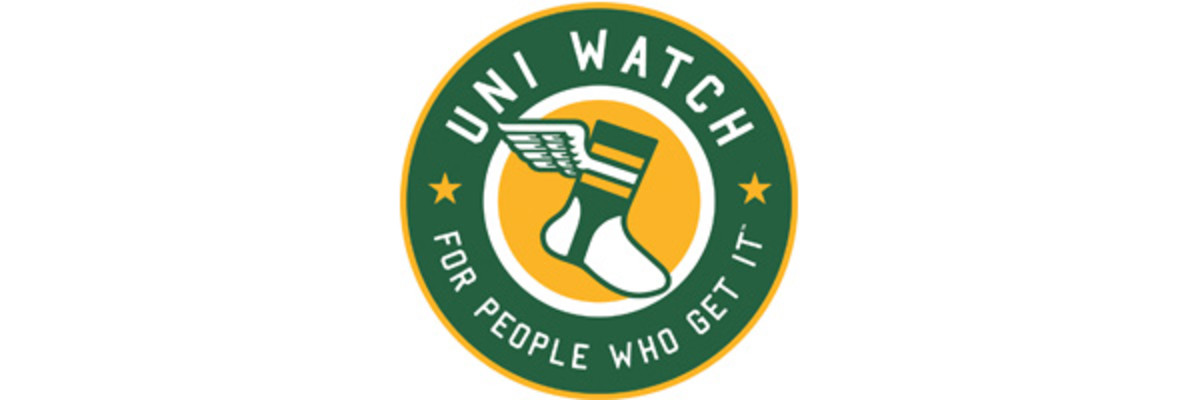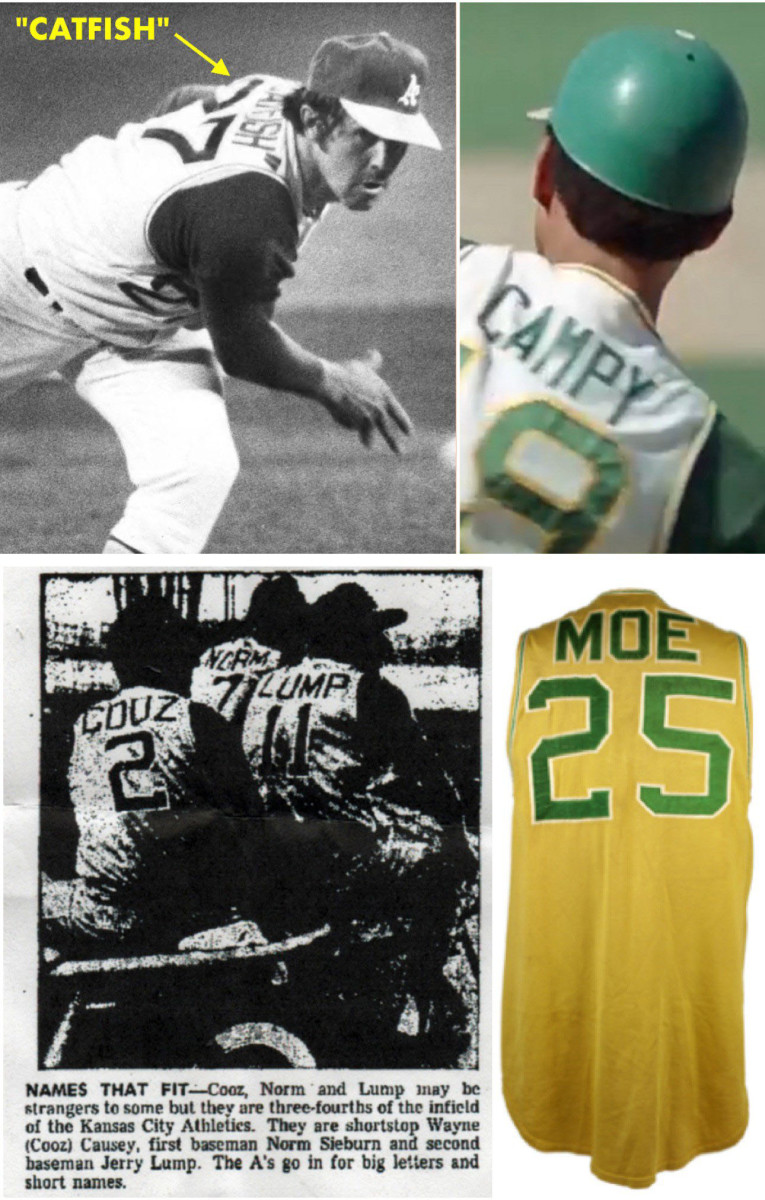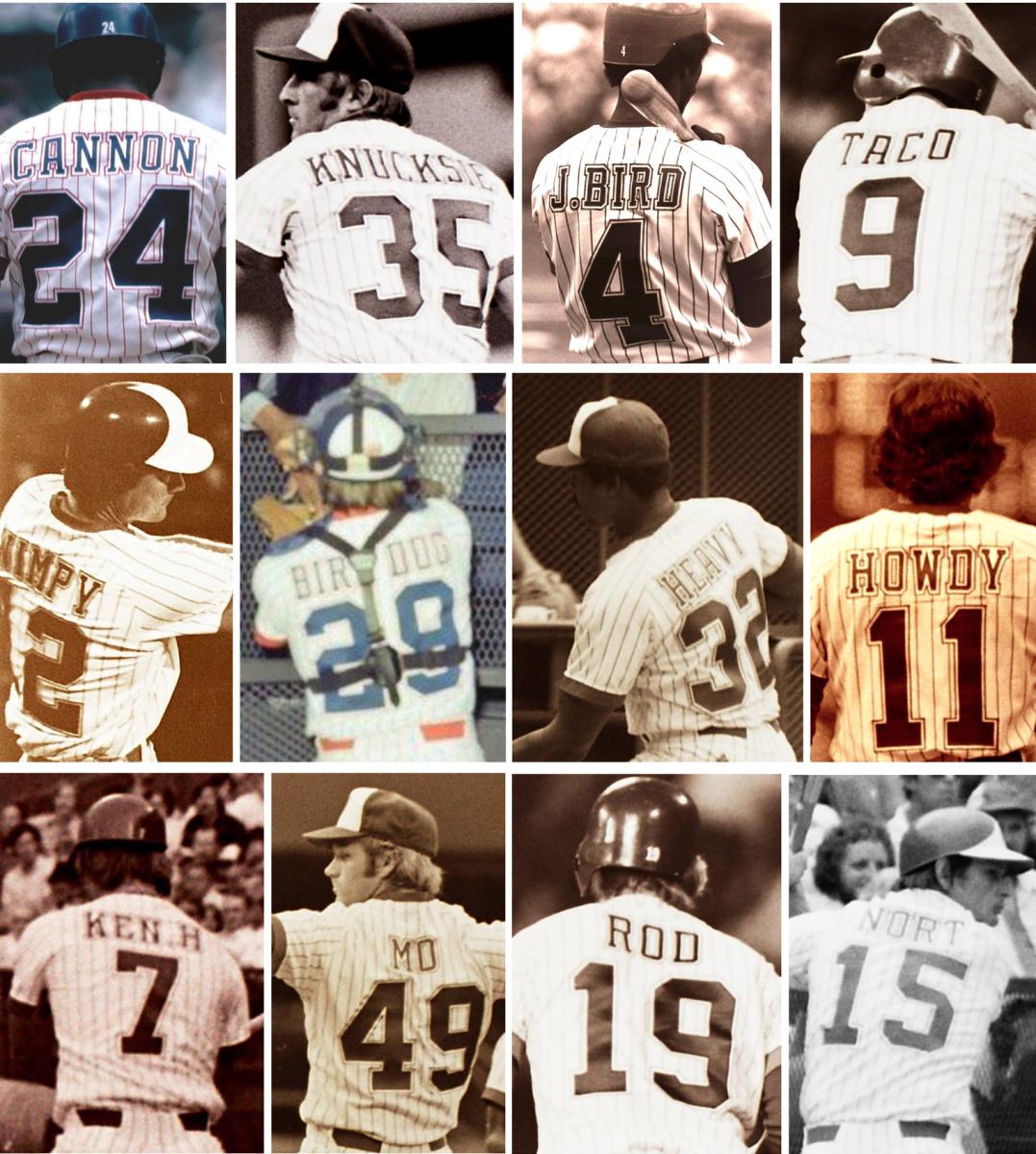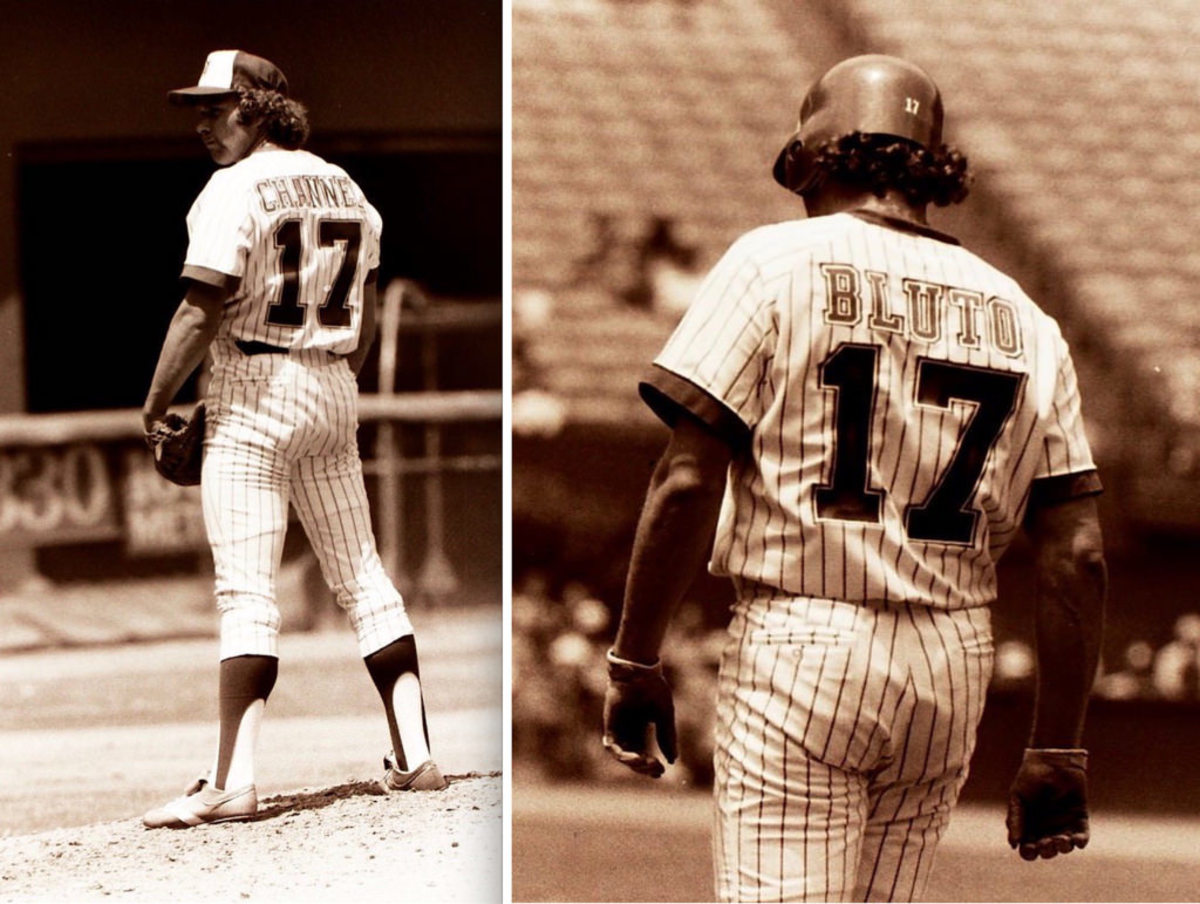The History of Nicknames on Jerseys in Baseball, Before MLB Players' Weekend


Friday marks the start of the third season of MLB Players' Weekend, the annual August promotion which, as you probably know, features players on all 30 teams wearing nicknames on the back of their jerseys, instead of their surnames (or in the case of the Yankees, instead of nothing at all).
What you might not know, however, is that a decent number of MLB players, including at least two Hall of Famers, wore nicknames on their backs well before the advent of Players' Weekend. These instances can be broken down into three major categories, so let's take them one at a time.
1. THE 1960s A'S
For many decades there could be no nicknames on MLB uniforms because there were no player names of any kind of the jerseys. The pioneer in this area, as in so many others, was White Sox owner Bill Veeck, who astutely realized that the increasing prevalence of televised games offered him a new marketing opportunity. A fan in the upper deck might not be able to read a player's name on his jersey, but a fan watching the game at home certainly could. So in 1960, the Sox became the first MLB team—and the first North American pro sports team of any kind—to wear NOBs (that's short for "names on back," for those of you who don't speak uni).
The years that followed were a bit haphazard, as some teams adopted NOBs and others didn't. This was basically uncharted territory, so there were no rules, no standards. Since NOBs still seemed like a novelty, why not push things a little further and have a player wear a nickname? Instead of an NOB, it would be a nickNOB.
That was the approach taken by another iconoclastic owner, Charles Finley, who purchased the Kansas City A's in 1961, dressed them in then-scandalous green-and-gold uniforms in 1963, and moved them to Oakland in 1968. Along the way, he encouraged his players to wear nicknames or first names, instead of their last names. Many of them, including future Hall of Famer Jim "Catfish" Hunter, were happy to oblige, both in KC and in Oakland. Here are a few examples:

2. THE 1976 BRAVES
Yet another hard-charging team owner, Braves honcho Ted Turner, is often credited with MLB's most famous use of nickNOBs. But it was actually Braves PR director Bob Hope (no connection to the famous entertainer) who came up with the idea of having the team go nickNOB-clad in 1976. As he later recalled, "We would say, 'It is better to go down the street as the village idiot and be noticed than to not be noticed at all.' We would do things that would stir up harmless controversy and get in the news but didn't really hurt anyone."
Some of the names that Braves players wore that season were slam-dunks, like "Cannon" for slugger Jimmy Wynn, who had long been known as the Toy Cannon, and "Knucksie" for knuckleballing future Hall of Famer Phil Niekro. Others were in-jokes among the Braves' players (third baseman Darrell Evans got "Howdy" because his teammates thought he looked like Howdy Doody, and first baseman Tom Paciorek got "Wimpy" because he liked to eat hamburgers, like the Popeye character Wimpy). Still others were in questionable taste when viewed by today's standards ("Taco" for infielder Marty Perez because of his Mexican heritage, and “Heavy" for first baseman Earl Williams because he was, well, heavy). And some seemed like they were just mailed in ("Rod" for infielder Rod Gilbreath; "Ken H" for outfielder Ken Henderson).

But the nickname that got the most attention, and has since become somewhat infamous, was the one assigned to pitcher Andy Messersmith: "Channel." Nobody actually called him that, but when combined with his uniform number, 17, it created a de facto ad for Turner's cable TV channel, SuperStation WTCG. National League president Chub Feeney promptly put the kibosh on that, so Messersmith's nickNOB was changed to "Bluto" (another Popeye reference).

The nickNOB gimmick was used only at home, and only from May 1 through June 24—a span of 28 games. More than four decades later, it remains one of great promotional stunts in MLB history.
3. ODDS AND ENDS
The A's and Braves account for the vast majority of MLB's pre-Players' Weekend nickNOBs, but there a few other teams have dabbled in the practice. For example:
• First baseman/outfielder Ken Harrelson, who played for four American League teams from 1963 through 1971 and later had a long broadcasting career with the White Sox, was often called "Hawk" because of his prodigious proboscis. For at least one season—1969, with Cleveland—he wore that nickname on his jersey:
Notable Moments in NOB History: Ken "Hawk" Harrelson wears his nickname in 1969 (including what appears to be an upside-down "M" instead of a "W"). pic.twitter.com/hR4YPT34E6
— Uni Watch (@UniWatch) February 20, 2018
• Outfielder Tony Conigliaro wore "Tony C" during his 1971 season with the Angels (and his brother Billy later wore "Billy C" with the A's!):
Notable Moments in NOB History: Tony Conigliaro of the Angels wore "Tony C" in 1971. pic.twitter.com/VBfpKdEadG
— Uni Watch (@UniWatch) February 20, 2018
• Giants outfielder Chili Davis wore "Chili" in the 1986 All-Star Game:
Fun fact: Chili Davis, then with the Giants, wore CHILI on his jersey in the 1986 MLB All-Star Game. To my knowledge, it's the only time he ever wore his nickname. pic.twitter.com/p63mSxZi2M
— Uni Watch (@UniWatch) August 19, 2019
• Twins pitcher Paul Thormodsgard wore "Thor" during his rookie season in 1977 (presumably because the Twins had trouble fitting his full surname onto his jersey), long before Mets pitcher Noah Syndergaard did likewise for Players' Weekend:
Fun fact: Twins rookie pitcher Paul Thormodsgard wore THOR on his jersey in 1977 — four decades before Mets pitcher Noah Syndergaard did it for Players' Weekend! pic.twitter.com/8EEeWf0jtb
— Uni Watch (@UniWatch) August 19, 2019
• Speaking of the Mets (and of names not fitting on jerseys): When the Mets wore their infamous Mercury Mets "futuristic" uni design in 1999, pitcher Jason Isringhausen's name wouldn't fit on his jersey in the uniform's vertically lettered format. So he wore "Izzy" instead:
When the Mets wore their Mercury Mets uni in 1999, Jason Isringhausen's name wouldn't fit in the jersey's vertically stacked NOB format, so he wore IZZY instead. pic.twitter.com/v3FuyTAqQP
— Uni Watch (@UniWatch) August 19, 2019
Do you know of other MLB nickNOBs from pre-Players' Weekend era? If so, you know what to do.
Paul Lukas will do his best this weekend to focus on the nicknames and to ignore the awful black and white Players' Weekend uni designs. You can read more of his uniform writing on his Uni Watch Blog, plus you can follow him on Twitter and Facebook, or sign up for his mailing list so you won't miss any of his SI columns. Want to learn about his Uni Watch Membership Program check out his Uni Watch merchandise, or just ask him a question? Contact him here.
